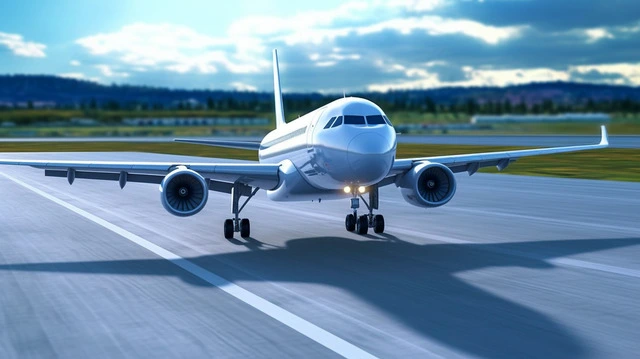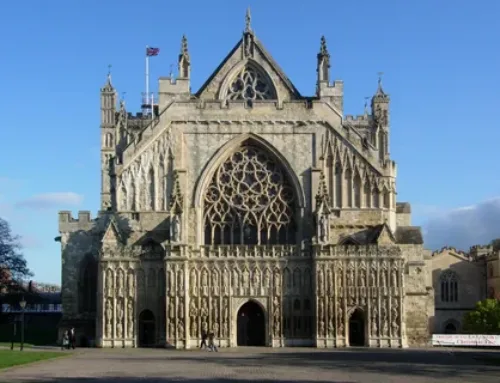How 3D Plane Rendering Is Transforming Aircraft Design
Technology has gone a long way in aerospace engineering. In recent years, this is the biggest advancement in 3D plane rendering. This technology has changed how aircraft are designed, tested, and visualized from conceptualization to simulation and production.
The era of hand-drawn sketches and 2D blueprints as an integral part of aircraft development is long gone. Today, 3D rendering is a major part of the aircraft design process, making it easier, more accurate, safer, faster, and thus more affordable.
WELL, IN THIS ARTICLE, WE DESCRIBE HOW 3D RENDERING FOR AIRCRAFT DESIGN IS CHANGING THE WAY OF DESIGNING AIRCRAFT ARE DESIGNED TODAY AND WHY IT IS NOW A MATTER OF NECESSITY FOR MODERN AIRCRAFT DESIGN SERVICES.
What Is 3D Plane Rendering?
The rendering of planes in three-dimensional graphics it makes use of specific software that projects three-dimensional images of aircraft on screen. Computer experts work to formulate such 3D models with great detail, and from there realistic textures can be applied to show the aircraft part or system’s appearance and behavior.
The procedure involves both modeling the external and internal structures of the subject, such as fuselage, wings, engines, and tail on the one hand and cockpit, seating, cargo space, avionics on the other hand. Advanced tools also allow dynamic simulations, for example airflow, structural stress, and thermal performance, across a range of flight conditions.
The Evolution of Aircraft Design
Traditionally, aircraft design relied on hand-drawn schematics, clay models, and physical prototypes. But these methods were:
- Time-consuming
- Costly
- Prone to human error
- Limited in visual accuracy
Engineers began creating 2D and later 3D digital models. However, it is the advent of realistic 3D visualization services using tools like Unreal Engine, Blender, and Autodesk that has propelled aircraft design into a new age.
Today’s models are not just geometrically precise, they’re fully functional visual simulations. That can be tested and refined virtually before a single part is physically built! Now, let’s discuss its benefits:
Key Benefits of 3D Plane Rendering in Aircraft Design
1. Enhanced Visualization
One of the main advantages of 3D plane rendering is realistic, comprehensive visualization. Engineers, designers, clients, and stakeholders can view the aircraft from any angle, under various lighting, and with different materials, all before production.
This enables teams to:
- Spot design flaws early
- Experiment with various configurations
- Enhance ergonomics and aesthetics
- Communicate more effectively with non-engineers
2. Improved Collaboration Across Teams
The development of aircraft requires a plethora of specialists. They use a shared 3D model means that structural engineers to all marketers visualize from the same reference.
3. Rapid Prototyping and Iteration
With 3D modeling services, designers are enabled to quickly prototyping the virtual parts and test them utilizing tools such as CFD and FEA. These simulations help analyze stress, heat, and pressure.
4. Customization and Modular Design
Aircraft design services often require flexibility. With 3D rendering, modular components can be easily adjusted for different configurations. Whether it’s military versus commercial needs or unique customer specifications, rendered models can adapt layouts, engine types, wing designs, and avionics systems.
5. Marketing and Stakeholder Engagement
3D renderings help manufacturers create compelling visuals for sales, investor pitches, and marketing. Clients can explore cabin interiors, watch gear deployments, and interact with virtual cockpits, helping build trust and shorten sales cycles.
How Major Airplanes Use 3D Rendering?
Boeing
Boeing, in all stages of aircraft development, is rendered in 3D. The 787 Dreamliner program relied on virtual simulations and digital mockups to detect and correct thousands of design issues before assembly. Hence, it helps to reduce delays and development costs.
Airbus
From design to manufacturing, Airbus applies the 3D expert platform from Dassault Systems across the entire lifecycle. This has led to:
- Fewer design errors
- Faster build time
- Lower scheme designers cost
SpaceX
Though focused on spaceflight, SpaceX uses detailed 3D modeling services and immersive visualization tools to design spacecraft. Engineers use VR and AR headsets to collaborate and inspect models as though working with physical hardware.
What is the Impact on Safety, Environment, and Cost?
Safety is a top priority in aviation! With 3D visualization services, engineers can simulate thousands of scenarios from crash impacts to pilot ergonomics. This helps ensure:
- Regulatory compliance
- Enhanced crashworthiness
- Better cockpit design
- Optimized evacuation routes
Environmentally, 3D rendering reduces:
- Material waste
- Carbon emissions from prototyping
- Production delays due to design errors
SIMULATIONS ALSO HELP IMPROVE AERODYNAMICS, LEADING TO MORE FUEL-EFFICIENT DESIGNS AND REDUCED OPERATIONAL COSTS.
Conclusion
In short, 3D plane rendering is more than just a digital upgrade. It’s a transformation in how we design, build, and present aircraft. By enhancing precision, collaboration, and creativity while lowering costs and errors, it has become a core element in aircraft design services. Plus, the aerospace industry is poised for even greater efficiency and innovation.





